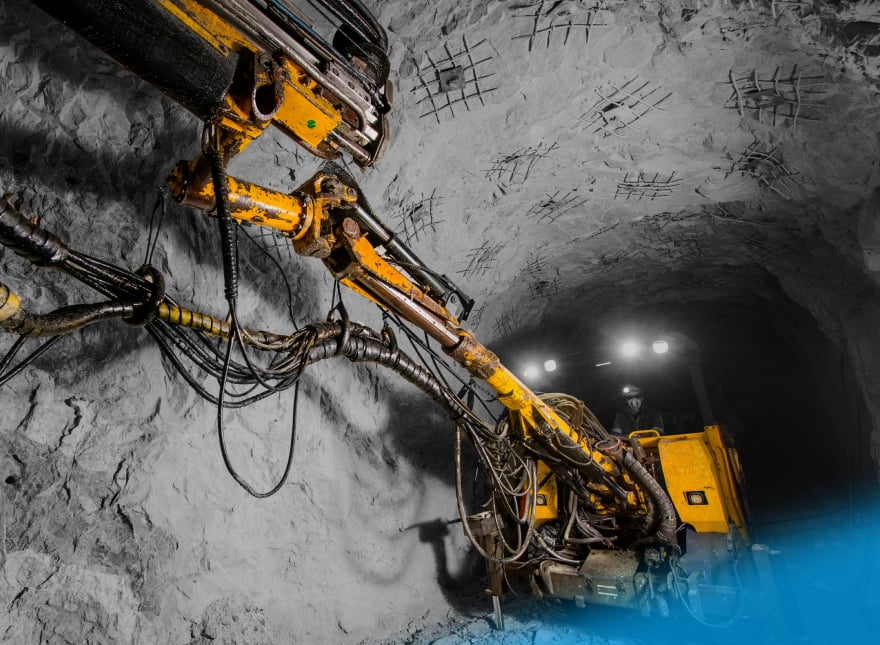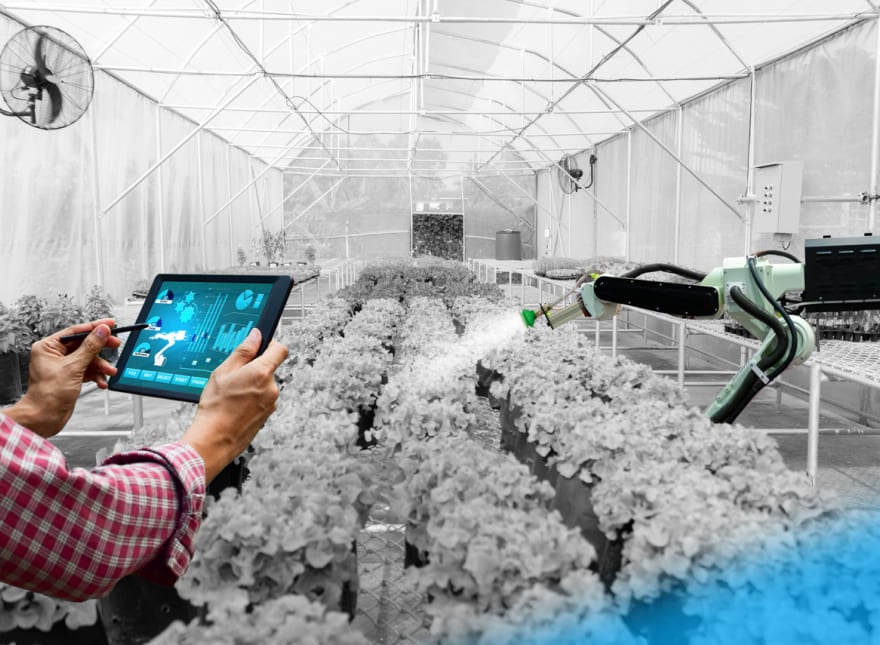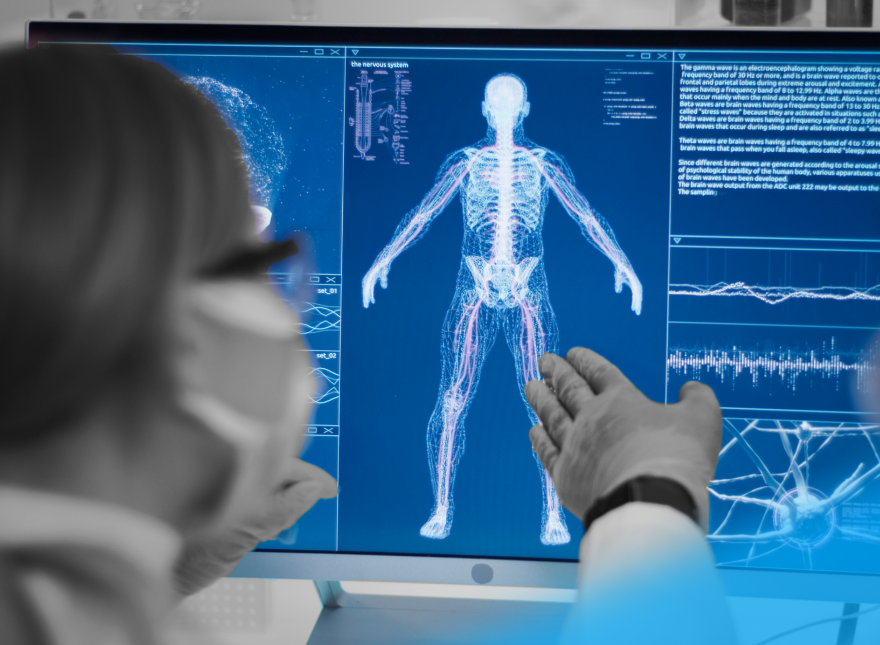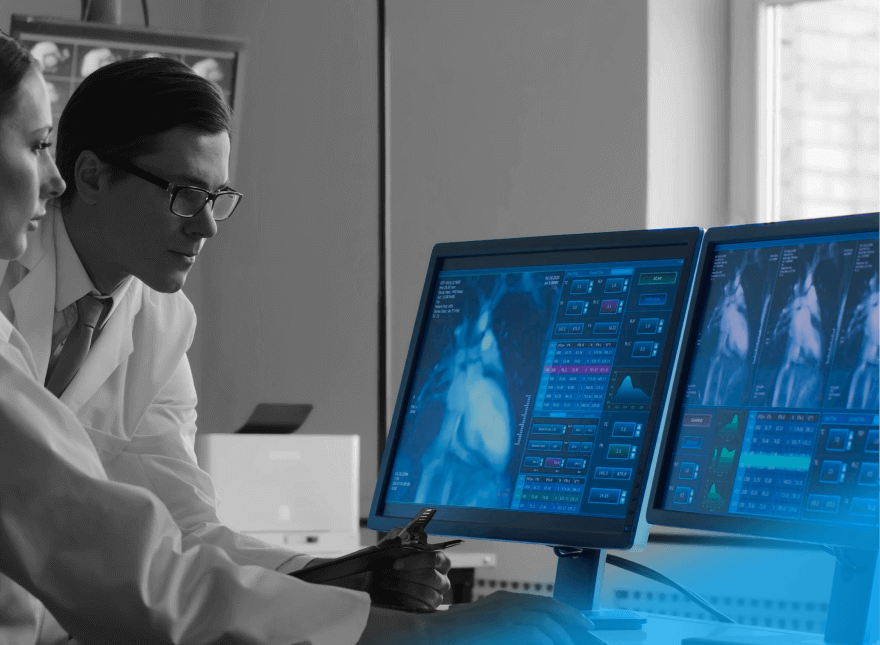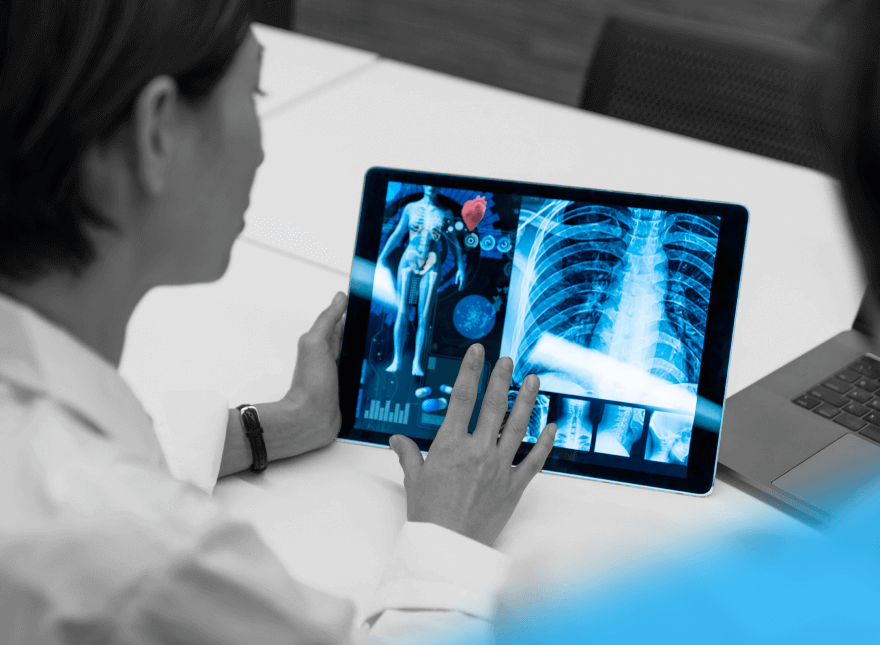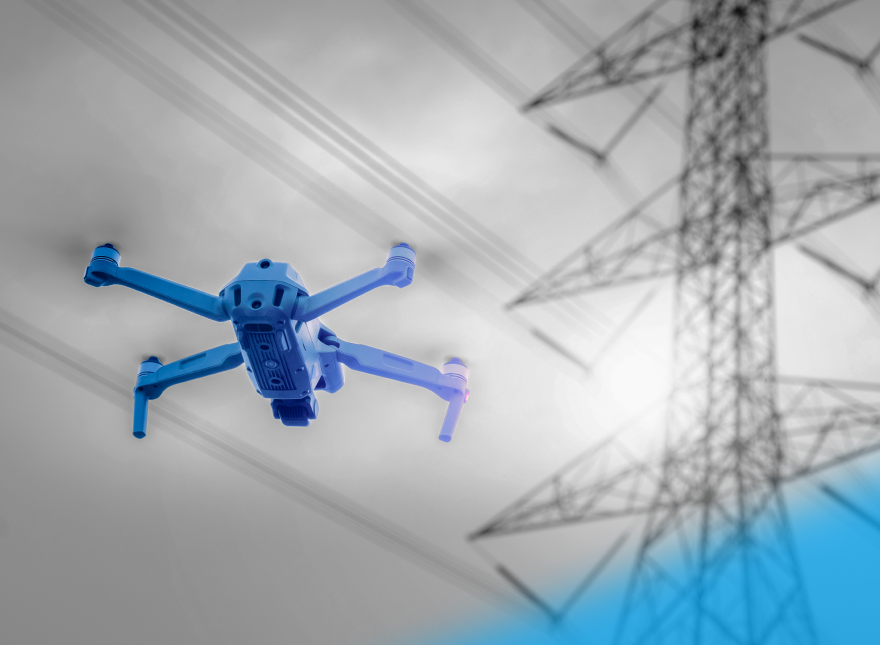Check out our latest blog article: From component to enterprise – modular robotics done right.
The Use of Drones in the Oil and Gas Industry: 3 Examples
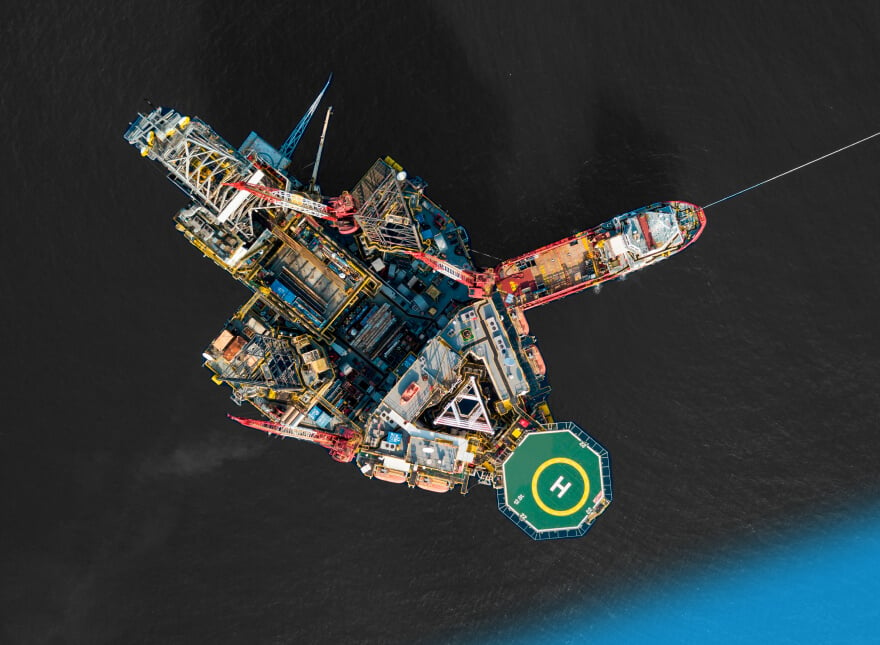
There is good news for companies that build drone applications for oil and gas: the regulatory climate seems to be finally starting to relax. In particular, new legislation in the US seeks clearer rules for approving drone flights. In the upcoming years, it will facilitate the use of commercial drones, which will allow drones in oil and gas to perform more tasks than ever before.
The many-faceted capabilities of drones are among the reasons why more and more oil and gas companies are taking this technology on board. For tech firms, this is fertile ground for offering more advanced solutions.
In this article, we’ll describe the three key areas for the use of drones in the oil and gas industry. We’ll also highlight the tech advances that will allow the creation of even more sophisticated solutions.
Tech Advances Facilitating Drones in Oil and Gas
A growing pool of tech advances is facilitating the spread of drone applications in oil and gas. These advances improve the capabilities of oil and gas solutions. In particular, they make drones more effective and allow them to perform more sophisticated tasks. Check out the latest tech trends driving the spread of drones in oil and gas.
Efficient, Green Alternatives to Batteries
Lithium-ion batteries are commonly used in drones, but they can inhibit the oil and gas inspection process. This is because most quadcopters have a modest payload and can remain in the air for no longer than an hour. Luckily, alternatives are coming to the market.
For instance, companies like Airbus are now building solar-powered drones. These are ideal for monitoring remote areas because they can fly for days, not hours. In a 2022 trial, a solar-powered Zephyr S drone stayed in the air for over 64 days.
Other companies are testing hydrogen fuel cell technology. Hydrogen fuel cells produce electricity by combining hydrogen and oxygen atoms. Water vapor is the only emission from a hydrogen fuel cell, so these drones can help companies meet regulations on CO2 emissions more effectively.
As for tech capabilities, drones powered by hydrogen fuel cells are lighter than battery drones and need less maintenance than gas engines, for instance. Some of these drones have already passed the tests. One of them is the E400 UAV from the US drone manufacturer Event 38. It flew for two hours and could do three times more with a full tank. The same model powered by a battery could only fly for 90 minutes.
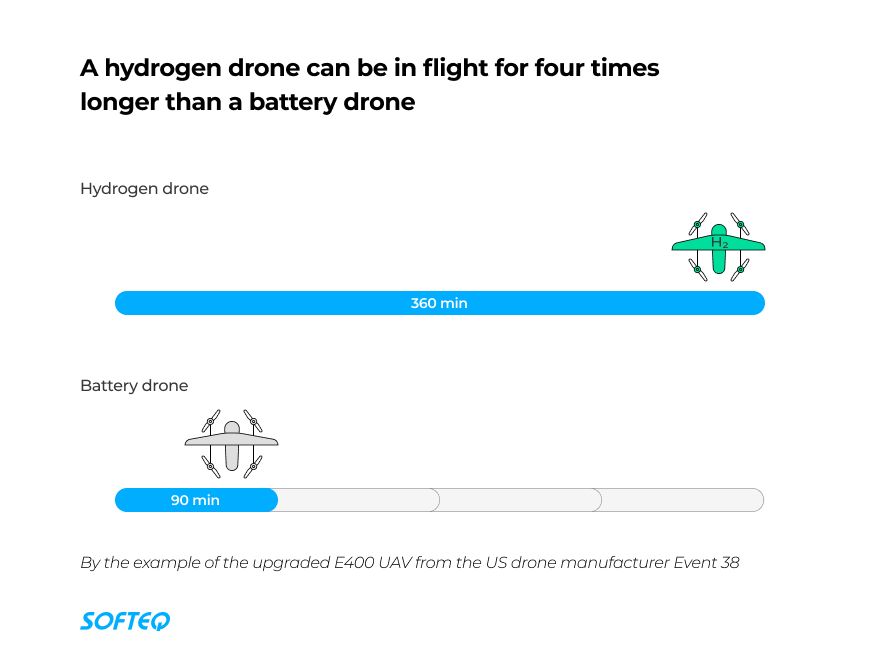
More Advanced Sensor Capabilities
A growing variety of sensors allow oil and gas drones to perform more tasks and make these tasks more sophisticated. Take cameras as an example—the most common type of sensor used in drones. Thermal cameras equipped with optical gas imaging sensors can spot methane and other gasses during the pipeline inspection.
Another example is acoustic sensors. They help drones fly autonomously because they can detect other airborne aircraft and keep them at a safe distance. For example, American Robotics, a commercial drone developer, uses acoustic sensors for their autonomous drones. Thanks to these sensors, the drones can avoid collisions and the company can guarantee their safety. In 2021, the Federal Aviation Administration (FFA) allowed these drones to fly beyond the visual line of sight.
One more aspect is that sensors now take up less of a drone’s weight and space than they did before. Tech giants support the trend of producing light and compact drones. For example, Bosch invested in single sensors that can perform multiple tasks.
More AI in Action
The growing volume of data gathered by drones сreated a demand for sophisticated data analysis. Today, AI with its subsets helps draw meaningful insights from the data that has been collected. For example, a CV system can spot a defective machine installed in a production line.
Another strong capability is predictions. For example, AI software can not only detect signs of corrosion on pipes, but it can also forecast its spread and enable teams to plan maintenance services. What’s more, AI enables drones to continuously learn. For example, drones have learned to avoid collisions thanks to machine learning. AI capabilities also help drones fly autonomously—even at a distance where the operator can no longer see them.
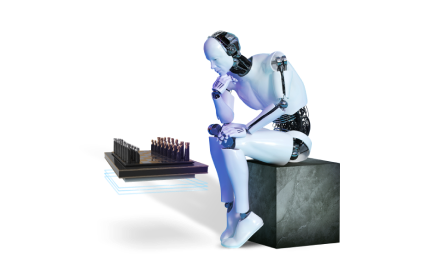
The Spread of 5G
5G is unlocking new capabilities for drones in oil and gas. In particular, it enables drones to send more data to the ground faster. It also ensures autonomous drones can operate efficiently and safely. Mobile operators such as AT&T, Verizon, and T-Mobile have already tested and used 5G for drone applications. Thanks to 5G, it’s likely that real-time video streaming from drones will be possible in the future.
Advances in Edge Computing
With edge computing, it’s possible to process, analyze, and store data close to where it’s collected. For drones, this means a shorter delay between collecting data and taking action. Some of today’s companies offer drones with edge computing containers that process visuals once the drone returns to its station. A number of industry players are also working on technology to allow a larger part of the data obtained by drones to be processed.
These evolving tech capabilities make drones ideal candidates for helping with surveillance or assisting in the case of an emergency. Let’s take a look at the three most common areas of usage for drones in oil and gas. We have also provided real-life examples for each use case showing how companies use drones and benefit from the technology.
Use Case 1. Inspection and Surveillance with Drones
Oil and gas companies have many assets to monitor and inspect. Some of them are large offshore sites that are difficult to access. Consider the industry giant Shell. At one of their locations—the Surat Basin in Australia—the company has over 3,000 gas wells that require constant monitoring. Other companies also need to keep an eye on their pipelines, tankers, and flare stacks. That’s why they turn to drone vendors for inspection and surveillance solutions, both onshore and offshore.
For example, companies may need drones to inspect oil tankers for defects. Smart solutions evaluate the tankers to help prevent leaks, fires, and other incidents.
Drones with high-resolution RGB and thermal cameras can inspect flare stacks. Oil and gas companies need to know and understand the condition of the flare and its life expectancy. This helps plan maintenance services. For example, Chevron, a US oil and gas company, used Terra Drone Corporation’s multirotor drone for this purpose in 2021.
In oil and gas, drone inspection also helps collect seismic data during exploration. This data holds a lot of information. It can help locate oil reserves and provide information on fracture density and orientation. As a result, it improves the accuracy of drilling and well placement.
Drones are also useful for monitoring remote areas. The most sophisticated solutions have vertical takeoff and landing capabilities, which allow drones to avoid collisions and even fly beyond the visual line of sight.
Real-Life Example
Sinopec is the biggest oil company in China, with over 6,000 km of pipeline. They need to survey the full pipeline on a regular basis to reveal any threats and damage. The UAV technology from Microdrones, a Germany-based drone manufacturer, helps with this task.
Before drones, Sinopec had to send personnel to conduct manual inspections. The process didn’t go very quickly: workers could only cover up to 7 km of pipeline each day. Plus, they were at risk of meeting poisonous snakes and insects in the dense forests and mountain roads where the pipeline is situated.
With drones, the situation has changed. A single drone can perform up to 10 flights per day, inspecting up to 100 km of pipeline overall. If you take into account the time needed to prepare for flights, analyze the collected data, and maintain equipment, Sinopec can inspect 800 km of pipeline per month. This is eight times more than they could through manual inspection.
Sinopec can now also detect high-risk locations that are vulnerable to disruptions and manage the risks. The technology allows them to reveal threats faster than they could without drones. The company keeps workers away from dangerous areas, reducing the risk of injury.
Benefits to Offer Oil and Gas Companies
- Better visibility of assets
- Carrying out routine inspections faster
- Being able to access hard-to-reach areas
- Ensuring better safety for personnel
Use Case 2. Mitigating Emissions with Drones
The oil and gas industry is among the first that has to take environmental concerns into account. State regulations and pressure from investors are forcing companies to mitigate their footprints. A serious issue is methane emissions—their effect on global warming is more than 80 times greater than CO2. The oil and gas sector is in the top three contributors to methane emissions: it accounts for a quarter of methane emissions from human activity.
Methane is released when natural gas is flared or vented. It also comes from small irregular leaks from pipelines or storage tanks and equipment that companies use in production. So, to keep emissions under control, it’s important for oil and gas companies to detect and measure them. Drone applications are here to help. They can detect methane emissions even in hard-to-reach facilities.
There are several drone solutions that help monitor methane emissions in oil and gas. Drones with sniffer sensors can show the concentration of methane and its approximate location. One of the cons is that sniffer technology is sensitive to windy weather, but optical gas imaging thermal cameras can help in these cases. These cameras show the leak and its location, but they don’t measure the size of the leak and the concentration of methane. Another option for tackling windy weather is to mount gas analyzers based on infrared and laser technologies.
There’s one more alternative: ultra-light gas sensors. They are lightweight, sensitive, and efficient at detecting a wide range of gasses. Such sensors are based on AUSEA technology—the “airborne ultralight spectrometer for environmental applications” technology that can be integrated into drone solutions. TotalEnergies, a French oil and gas company, already benefits from it. Their drones have dual sensors that detect methane and CO2 as well as their sources. On drones, these sensors augment infrared cameras and round sensors.
Real-Life Example
Neptune Energy is an oil and gas exploration and production company. They have facilities throughout the North Sea, North Africa, and Asia Pacific. The company has joined the global effort to cut methane emissions on-site, and drones have come in handy for this.
The company began their efforts by measuring methane emissions as a part of a scientific study. These measurements would help them develop an action plan to reduce their emissions. The company intends to reach its target of zero methane emissions by 2030.
In 2021, Neptune Energy decided to measure methane emissions at its gas production facility in the North Sea. They did this through a five-day study coordinated by scientists. Several drone companies helped Neptune Energy to complete this operation. Texo DSI, a UK drone platform provider, operated a rotary drone equipped with sensors. SeekOps, a US developer, provided methane measuring and analytics technology for a fixed-wing drone.
During the study, a rotary drone flew close to the production platform, measuring emissions. At the same time, a fixed-wing drone circled the platform at a distance of 250 meters to record the total volume of methane emissions. Both flights were controlled by operators from the platform’s helipad. In total, the operation covered more than 313 miles.
In 2021, Neptune Energy was awarded “Gold Standard” status by the Oil and Gas Methane Partnership in recognition of their commitment to zero methane emissions and their reporting.
Benefits to Offer Oil and Gas Companies
- Collecting data on methane emissions in real time
- Detecting methane at hard-to-reach facilities
- Meeting regulations to reduce emissions
- Less personnel involved in taking measurements
Use Case 3. Safety and Emergency Responses with Drones
Emergency situations regularly occur in the oil and gas industry. Gas leaks can harm workers and cause respiratory problems for people nearby. Oil spills can pollute the water in lakes, rivers, and seas. For oil and gas companies, all these issues can result in legal fights and penalties. That’s why they look for solutions to prevent emergencies and deal with their consequences, too. Drones can be helpful here.
There are two working scenarios where drones come in handy. One of them is about improving safety for personnel. Drones can simply replace human workers in survey activities carried out in hazardous areas. Companies don’t need to send personnel into these areas, which is very helpful if access is restricted (for example, there might be a lack of solid ground). Drones can also capture aerial imagery to evaluate safety conditions in the field before humans step in.
In the second scenario, drones help oil and gas companies respond to emergencies. They can help evaluate damage around oil and gas assets in the event of incidents or severe weather conditions. For example, companies might need real-time video and analytics to map fire incidents. This data will help them accurately determine the affected area and take measures to prevent the fire from spreading further and faster. The use of drones can also help companies send personnel to the right places and ensure their safety. Drones can take part in rescue operations, too. Solutions with payload capacity can deliver first aid, water, and food to offshore personnel when needed.
Real-life Example
Chevron is an American oil and gas giant. The company is known to deploy drones to detect leaks, monitor assets, and map earthworks. They also evaluated the use of drones for emergency response in an oil spill.
Chevron first tested whether drones could assist them in oil spills back in 2016. They wanted to check whether drones could collect crucial data in times of emergency. The test was conducted around the Richmond Refinery on San Francisco Bay. Chevron used different drones with various cameras to map oil buildup on coastlines and track oil slicks offshore. As a result, drone flights showed more than 70% of oil targets along five miles of coastline.
For Chevron, drones proved their efficiency in emergency responses. Without drones, the company has to send trained observers to fly in helicopters or planes. They would also send inspectors directly into hazardous areas. Drones could replace humans in risky tasks. Emergency response is also faster with drones: there’s no need to wait for the pilot to prepare for takeoff.
As of 2022, Chevron has placed a new purchase order with American Robotics for fully autonomous drones. They will help the oil and gas giant to watch for oil leaks, track methane emissions, and identify damaged equipment. For the employees, the deployment of autonomous drones will enhance safety.
Benefits to Offer Oil and Gas Companies
- Improving health and safety for employees
- Ensuring emergencies are responded to faster
- Collecting crucial data more accurately
Drones in Oil and Gas are on the Innovation Frontier
According to GlobalData forecasts, the global drones market will reach $89.6B by 2030, up from $13.7B in 2021. This increase will be considerably driven by the growth of the commercial segment where oil and gas belong. The improving regulatory climate and tech advances are easing the spread of drone applications in this sector. Today, more than a third of drones are commercial, and this share will double in the upcoming years.
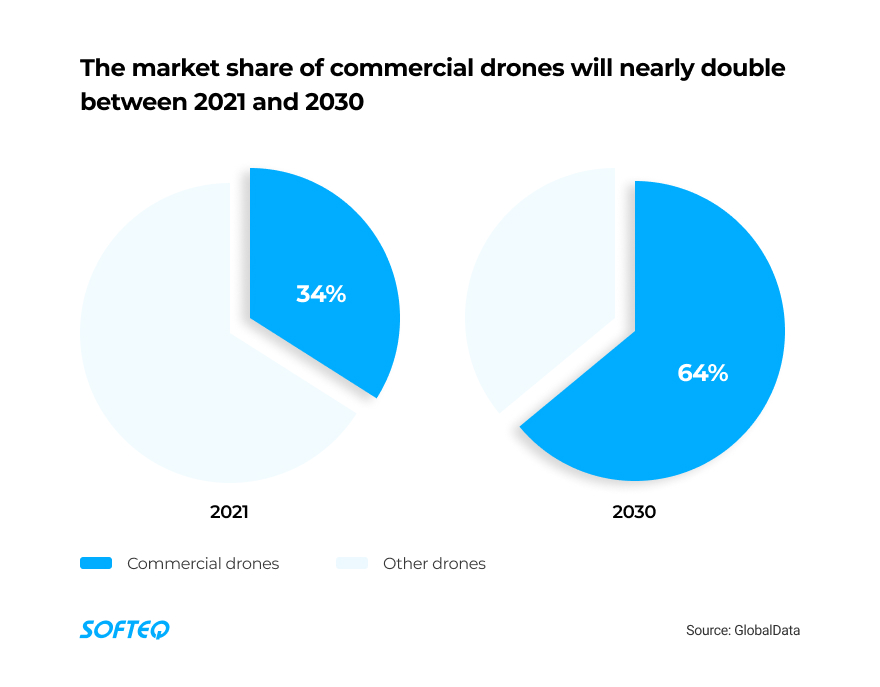
Market players are consolidating to hold up. Mature drone manufacturers are actively partnering with or acquiring UAV firms with niche capabilities. Here are just some significant transactions from over the last three years:
- In 2020, Ford acquired Velodyne LiDAR, a manufacturer of lidar sensors.
- In 2021, Kitty Hawk acquired 3D Robotics Not, a drone data platform provider.
- In 2022, Ondas Networks acquired Ardenna, an image-processing systems provider.
The number of partnerships is growing massively, with 270 deals in 2022 versus 193 deals in 2021. 500 Global, Google for Startups, and Y Combinator are among those who invested in drone firms in recent years.
The drone sector is also on the innovation frontier, and the many patents flooding the market are proof. According to GlobalData, the number of drone-related patents granted grew from 4,163 to 16,080 between 2016 and 2021. DJI, Boeing, and Amazon are leaders in patents.
Final Note
The oil and gas sector has already experienced the benefits of using drones. Today, drone applications in oil and gas help companies inspect remote, hazardous areas. Companies can also use drones to respond to emergency situations. They can aid in the delivery of both materials and first aid kits.
What’s more, harmful emissions remain something that companies in the sector have to track and manage. Therefore, some businesses have already adopted drones to reduce their carbon footprint.
If you want to build the right solution for this highly competitive market, Softeq is here to help.
More articles on the topic
